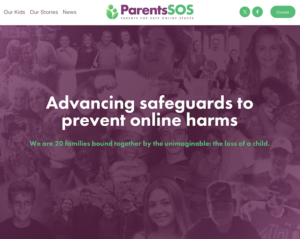One of the most difficult challenges for parents and teachers these days is trying to manage problematic behaviours in children. When children aren’t feeling seen or heard, they will try just about anything to get adult’s attention. Today’s ‘tech centric’ adults who are rarely found without their phones, are not present nor are they able to care for or attend to children. In the presence of a detached adult, children are forming very unhealthy attachment to their screens resulting in unfamiliar, often complex and always problematic behaviors. The propensity of the education and health systems to diagnose and medicate these problematic behaviors is increasingly worrisome. This article, written by a paediatric occupational therapist uncovers the underlying reasons why we are seeing epidemic levels of child problematic behaviours, and offers a variety of school, home and community-based techniques and strategies to make sure children get exactly what they need to grow and succeed.
As a consulting pediatric occupational therapist, I work primarily in daycare, pre-school and school-based settings with children who exhibit behaviours that are difficult, disruptive and even violent. These behaviors can range from refusal to do what they are asked or bolting from classroom or school, to kicking, hitting, biting, pushing, and hurting parents, fellow students and teaching staff. These severe child behaviours often pose significant risk of injury for the student themselves, classmates and school staff, and behavior management requires lengthy team meetings and costly consultation with behavior experts. While child screen overuse and exposure to violent and/or sexual media content is frequently a contributing factor to observed increase in aggressive or violent behaviors, it is generally not the only factor at play.
Excessive screen overuse by children and ‘tech neglect’ by adults often result in children failing to get they’re most basic needs met for care and attention. Fear of failure, as well as lagging cognitive, social and motor skills, promotes low confidence and competence and a perception that everything is too difficult. Match low skills with unmet needs and feelings of not being seen or heard, and the result is a maelstrom of ‘out of control’ emotions which cause a child to either ‘act out’ and express, or ‘act in’ and repress their feelings. In addition to screen overuse, child trauma, abuse and neglect occurrence is on the rise, often unaddressed at home and undetected in school environments. Educators having a ‘trauma informed lens’ is imperative when determining underlying causes for child problematic behaviour. Educating children regarding screen media consumption and considering trauma first instead of defaulting to thinking a child is just ‘bad’, can be profoundly effective as an initial co-treatment strategies.
Trauma
Whether watching violence on a screen or witnessing or experiencing violence in homes, schools or in community settings, trauma is an everyday and often frequent occurrence for most children. Cartoons, video games, social media and pornography when viewed by young children can be very trauma inducing as this type of media content is rife with sexual, physical and emotional violence. Dr. Douglas Gentile, a professor and researcher on violent video games reports in an interview that children under the age of 8 years are unable to discern the difference between what is real and what is virtual. Consequently, when young children watch violent content, their bodies and brains have a fear response which includes increased blood pressure, rapid heart rate and image memory. Brains are like video cameras and media content viewed will be with that child forever. A recent study showed that when viewing dopamine-inducing imagery, which is found in most digital media content, the protein delta phosphate B is produced which ‘hardens’ the myelin sheath surrounding nerves essentially preserving viewed images forever. It is safe to assume that every child we work with or parent, is traumatized to some degree today and requires our help to recover.
Abuse
Online and/or in-person bullying (by siblings, parents, peer students or teachers) is also an everyday occurrence for most children. While home used to be a safe place where kids could relax and feel safe, the invasion and proliferation of social media into today’s homes has resulted in children who are anxious, scared, and agoraphobic. The rapid rise in duration, frequency and intensity of exposure to violent media content in video games and pornography, has caused a concurrent rise in spousal and child abuse, as well as a rise in violent crimes including rape, murder and mass murders. As the rise in incidence of school shootings becomes common place in the US, schools are glaringly no longer safe either. Parents and teachers who fail to supervise their children’s digital media content and durations, are allowing them to drift further and further from life sustaining real world full of love and caring, and readily fall into the virtual hole of aggression, violence and defiance. Is this not in and of itself a form of abuse by the people children should trust the most, their parents and teacher?
Neglect
Biologically speaking, humans are considered to be ‘pack animals’, and pack animals don’t do very well when separated from their ‘pack’ which for children is their families and classmates. Every time an adult, sibling or peer puts a digital device in front of them, this acts as an interface which prevents any meaningful, life sustaining human connection with those surrounding them. In our screen centric society, all children are suffering from parental and teacher ‘tech neglect’. When adults are glued to their screens, they are disconnected from their children. In the absence of connection with adults, children are forming very unhealthy attachments to screens, often resulting in addiction. This is the first time in the history of humankind that we are witnessing children with addictions, and it’s not a pretty picture. Any adults who struggle with addiction know the incredible shame and destruction their addiction can cause on themselves, families, co-workers etc. Now imagine a being a child or young adolescent who has no knowledge or skills to manage this relatively new disorder. On top of having an addiction, these children and teens are growing up in a world where adults refuse to recognize the enormity of the problem, and often act to perpetuate the addiction by allowing unsupervised access to harmful media content at home and in school. Can you imagine being a child who knows they have an addiction to porn, video games or social media, but no one around them appears to even notice, much less offer them assistance? What would your behavior be like?
What To Do?
- Disconnect and Reconnect: put down your device and be available to your children/students. Recognize when you are addicted and admit it and seek help.
- Set Tool Rules: whether at home or school, adults need to set firm rules for screen duration and content. All child/teen online activity needs to be supervised by adults; if you can’t do this, then get rid of the device. Schools should be leaders in caring for children by banning cell phones from school campus.
- Labelling is Disabling: stop diagnosing and medicating problematic child behavior. If you are an adult, identify your intent in attaining a diagnostic label, for yourself or your children. For a longtime we assigned adult diagnoses to children e.g. depression, anxiety, obsessive/compulsive disorders, and now we are giving adults child diagnoses e.g. autism, adhd. Why…when we know that screen reduction makes all these conditions go away?
- Ensure 4 critical factors: make sure that children get sufficient movement, touch, human connection and access to nature to grow and succeed. Focus on increased engagement in healthy activities (as opposed to screen reduction) to achieve sustainable futures for all.
- Connection Initiatives: simple phrases like “I see your anger” or “I hear your in pain” can move mountains when it comes to addressing problematic behaviors. Pairing a human connection technique with touch through a sustained hug (or shoulder squeeze at school) is a win-win.
Problematic Child Behaviour – What are they trying to tell use was written in December 2023 by pediatric occupational therapist, biologist, author and international speaker Cris Rowan. Rowan’s website is Reconnect Webinars which contains a Fact Sheet with over 400 research references, blog is Moving to Learn and book is Virtual Child. Rowan can be reached at info@reconnectwebinars.com.




